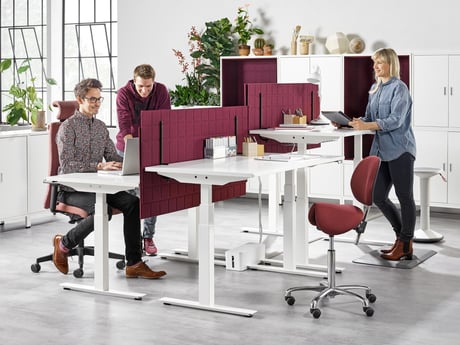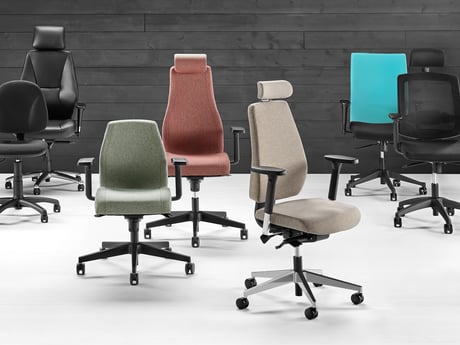How will social distancing change the way we work?

Back in January when we wrote about the anticipated office furniture trends for 2020, we could hardly have imagined where this year would take us! After two months of working from home for the vast majority of office workers, businesses are starting to explore how they can get employees back into the workplace. However, the workplace we return to won’t be the one we left. Social distancing measures will need to be strictly enforced and are likely to be part of our lives, both at work and at home, for some time to come. So, how do we expect social distancing to affect the modern office over the coming months and years?
An end to hot desking?
In order to provide greater flexibility to employees and reduce office costs, many offices have implemented a hot desk policy over the past few years. However, strict hygiene rules will necessitate a return to allocated desk spaces to limit the number of people touching the same equipment and keep close contact to smaller groups. So what does this mean for hot desks in the long run?
Hot desking was already a somewhat controversial policy. While benefits include clear desks, reduced overheads on office space and giving employees autonomy over how and where they work during the day, the reality is often different. It can send a message to employees that they are undervalued and not worth giving a permanent desk; it can cause teams to become disjointed; it can increase the likelihood of MSDs from poorly set up workstations and, of course, germs spread more quickly as people share dirty equipment.
With businesses now accustomed to holding meetings online, itinerant workers such as sales force may find they rarely go into the office at all, while office-based staff will need to have their own desk for the foreseeable future. Social distancing could well sound the death knell for hot desks.
Virtual collaborative areas?
One of the big trends we expected to see for 2020 was impactful collaborative spaces that provided resources for colleagues to be able to work together comfortably and effectively, such as office furniture that could be reconfigured easily. Even as workers return to the office though, working together in groups like this will be discouraged. Furthermore, many office workers have now adjusted to working with online tools such as Zoom, Skype and Teams. It seems unlikely then that these will suddenly become obsolete. It is realistic to expect that virtual hang outs will replace at least some face-to-face team meetings in the long term and that physical meetings will no longer be necessary for effective teamwork. Collaborative spaces will still be important, but the skills we have learnt from extended time spent working remotely will change the shape of them. Offices will need to invest in the latest technology and ensure excellent connectivity for their employees both on and off site. They should look at installing privacy pods so that employees can have online meetings with no interruptions or distractions from the surrounding office.
Anti-social spaces?
Break out areas have been a big trend over the past few years, giving employees the flexibility to work in a more relaxed environment and allowing colleagues to socialise. Now however, workplaces have been asked to stagger break times and reduce the number of people using communal areas. Employees will be encouraged to stay at their desk or take a break outside. Other strategies such as ‘cohorting’ have been proposed, meaning that businesses keep specific teams working together and keep those teams as small as possible. In the short term, social spaces in the office will need to adapt to new demands, limiting the number of users and allowing for more space between seats. However, break out areas are likely to bounce back once social distancing guidelines are relaxed. We humans are social creatures by nature and no technological advances will take that away. While meetings may move online, there is no substitute for spending time with your colleagues to strengthen working relationships.
There is no doubt that 2020 will have a lasting impact on the way we work. With less reliance on physical workplaces and greater reliance on technology, enforced work from home time will change the way many businesses choose to operate. Will companies choose to keep more remote workers, thereby reducing overheads and their environmental impact? Will we see a return to cubicles and less open plan office space? Watch this space to find out the office furniture trends for 2021!



